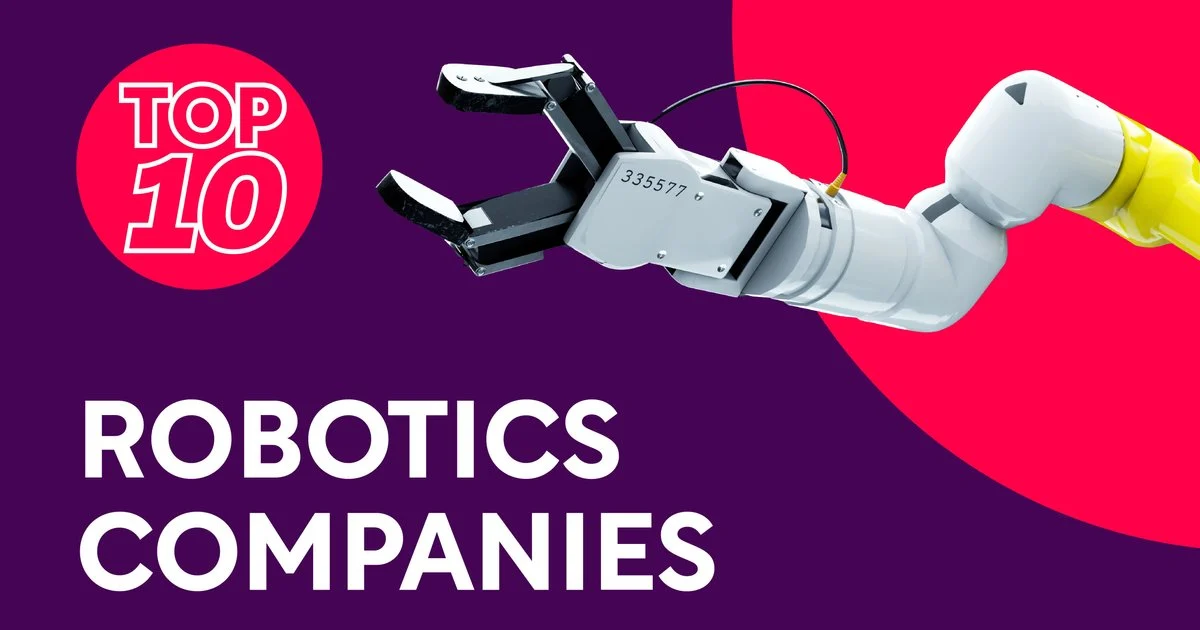From legacy industrial stalwarts to AI powerhouses and ambitious newcomers, the robotics landscape in 2025 is richer, more competitive, and more important than ever.
Top 10 Robotics Companies in the World (2025 Edition)
Robotics is one of the most dynamic and transformative industries in the world, blending mechanical engineering, artificial intelligence, automation, and human ingenuity to change how we live and work. As of June 2025, the sector has grown dramatically, with major players pushing boundaries in healthcare, logistics, manufacturing, and consumer markets. Here’s an in-depth look at the top 10 robotics companies making waves in 2025, starting from number 10 and moving to number 1.
10. Boston Dynamics
Famous for its dynamic, animal-like robots, Boston Dynamics continues to lead in agile mobile robotics. The company’s Spot and Stretch robots are increasingly common in warehouses, factories, and even outdoor inspection jobs. In 2025, Boston Dynamics expanded further into logistics by offering full-service deployment of automated material handling solutions. Its robots are prized for mobility, adaptability, and reliability in complex terrains.
9. ABB Robotics
ABB is a global industrial automation giant with robotics solutions used in automotive manufacturing, electronics, and packaging. In 2025, ABB Robotics introduced new collaborative robots (cobots) that are faster to deploy and safer around humans. Its vision systems and AI-driven path planning have made ABB a preferred partner for factories aiming to move toward fully autonomous production lines. The company's strength lies in dependable, scalable systems and a strong global service network.
8. FANUC Corporation
Japan’s FANUC is a longstanding leader in industrial robotics, famous for its signature yellow robots found in automotive and electronics manufacturing plants worldwide. In 2025, FANUC continues to innovate with AI-powered predictive maintenance systems that reduce downtime dramatically. Their new generation of lightweight, energy-efficient robots has been a hit among small and mid-sized manufacturers, democratizing advanced automation for firms that previously couldn't afford it.
7. DJI
Though best known for drones, DJI has aggressively moved into ground-based robotics, including delivery robots and inspection rovers for infrastructure and agriculture. In 2025, DJI’s AI-powered autonomous navigation systems set the industry standard for affordable, reliable mobility in challenging environments. The company has also partnered with governments and NGOs on search-and-rescue robotics projects. DJI’s ability to manufacture at scale and push prices down has opened robotics to many new markets.
6. Zebra Technologies (Fetch Robotics Division)
Zebra Technologies acquired Fetch Robotics in 2021, and since then has grown into one of the leading players in warehouse automation. As of 2025, Zebra’s autonomous mobile robots (AMRs) are everywhere in logistics, retail, and even healthcare. Their latest systems integrate seamlessly with warehouse management software, using AI to optimize picking routes and traffic. Companies have adopted these robots to keep up with e-commerce growth and labor shortages, making Zebra a vital supply-chain partner.
5. Hyundai Robotics
Part of Hyundai Heavy Industries, Hyundai Robotics has become a serious global contender with industrial, service, and even humanoid robots. The company’s factory automation solutions rival those of Japanese giants, while its service robots for hotels, hospitals, and airports are winning contracts across Asia. In 2025, Hyundai Robotics unveiled a new line of collaborative robots designed to work side-by-side with humans in manufacturing, while also investing heavily in AI and sensor technology for more intuitive interaction.
4. Teradyne (Universal Robots and Mobile Industrial Robots)
Teradyne owns both Universal Robots (the leading collaborative robot maker) and Mobile Industrial Robots (MiR), specializing in autonomous mobile robots for factories and warehouses. In 2025, Teradyne is at the forefront of flexible automation, letting companies mix and match cobots and AMRs to create adaptable production lines. Universal Robots’ new high-payload models and MiR’s improved navigation systems have made them the go-to choice for companies modernizing legacy plants without tearing them apart.
3. Nvidia Robotics
While not a robotics manufacturer in the traditional sense, Nvidia has become essential to the industry. In 2025, its Jetson and Isaac platforms are powering the AI brains of countless robots, from warehouse pickers to delivery bots and drones. Nvidia’s recent breakthroughs in reinforcement learning have enabled faster robot training in simulation before real-world deployment. As robotics becomes more software-driven, Nvidia’s dominance in AI chips and platforms makes it arguably the most important “infrastructure” company in the sector.
2. KUKA Robotics
Germany’s KUKA remains one of the most respected names in industrial robotics. In 2025, KUKA is redefining the smart factory with robots that are more flexible, networked, and autonomous than ever. The company has invested heavily in integrating machine learning for error correction and real-time adaptation on the production floor. KUKA’s mobile platforms and cobots have found strong demand among manufacturers transitioning to Industry 5.0, which emphasizes human-machine collaboration, sustainability, and resilience.
1. Tesla Robotics
Perhaps the most headline-grabbing player in 2025 is Tesla Robotics. Born from Tesla’s manufacturing automation and AI expertise, the company has surged ahead with its “Optimus” humanoid robot, now in limited commercial deployment. In factories, Optimus performs repetitive manual tasks once hard to automate, while Tesla has also announced plans for service and elder-care versions. Beyond humanoids, Tesla’s factories are showcases of integrated robotics and AI, making the company both a user and a vendor of advanced robotic systems. Tesla Robotics represents the cutting edge of AI-powered general-purpose robots, aiming to solve labor shortages and transform the global workforce.
